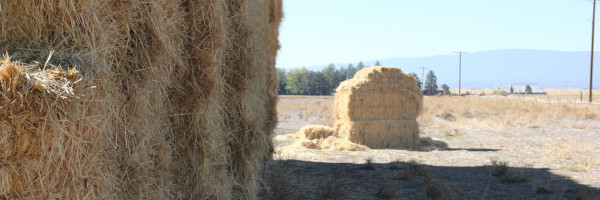Regenerative Agriculture: Difference between revisions
No edit summary |
mNo edit summary |
||
| Line 7: | Line 7: | ||
|sectors=Agriculture | |sectors=Agriculture | ||
|summary=Regenerative agriculture is a holistic approach to agriculture that focuses on the interconnection of farming systems and the ecological system as a whole. The concept of regenerative farming is not new. It was used by Indigenous communities centuries ago, long before industrial agriculture occurred. | |summary=Regenerative agriculture is a holistic approach to agriculture that focuses on the interconnection of farming systems and the ecological system as a whole. The concept of regenerative farming is not new. It was used by Indigenous communities centuries ago, long before industrial agriculture occurred. | ||
The Food and Agriculture Organization (FAO) of the United Nations is an international organization that leads international efforts to defeat hunger and improve nutrition and food security in promoting sustainable agriculture as the second of its 17 Sustainable Development Goals (SDGs) for the year 2030. | |||
The global food security challenge is straightforward: by 2050, the world must feed two billion more people, an increase of a quarter from today’s global population. The demand for food will be 56% greater than it was in 2010. Findings indicate that the world is not going to meet most of the food and agriculture-related Sustainable Development Goals targets by 2030. These challenges highlight the need for innovative agricultural advancements. | |||
Specifically, the recommendation from the United Nations G20 summit: "Enhance the food security by promoting sustainable agriculture, adopting circular economy models and healthy shifts in G20 countries, by leveraging key technological enablers and infrastructure." | |||
The purpose of this partnership with OpenCommons is to cultivate a collaborative community to advance promising smart technologies for urban and rural regenerative agriculture solutions. | |||
}} | }} | ||
=The top five principles of regenerative agriculture= | =The top five principles of regenerative agriculture= | ||
Revision as of 08:10, November 13, 2022
| Agriculture | ||||||||||||||||
|---|---|---|---|---|---|---|---|---|---|---|---|---|---|---|---|---|

| ||||||||||||||||
| Sectors | Agriculture | |||||||||||||||
| Contact | Ed Lisle | |||||||||||||||
| Topics | ||||||||||||||||
Activities
Press
| ||||||||||||||||
- Authors
Regenerative agriculture is a holistic approach to agriculture that focuses on the interconnection of farming systems and the ecological system as a whole. The concept of regenerative farming is not new. It was used by Indigenous communities centuries ago, long before industrial agriculture occurred.
The Food and Agriculture Organization (FAO) of the United Nations is an international organization that leads international efforts to defeat hunger and improve nutrition and food security in promoting sustainable agriculture as the second of its 17 Sustainable Development Goals (SDGs) for the year 2030.
The global food security challenge is straightforward: by 2050, the world must feed two billion more people, an increase of a quarter from today’s global population. The demand for food will be 56% greater than it was in 2010. Findings indicate that the world is not going to meet most of the food and agriculture-related Sustainable Development Goals targets by 2030. These challenges highlight the need for innovative agricultural advancements.
Specifically, the recommendation from the United Nations G20 summit: "Enhance the food security by promoting sustainable agriculture, adopting circular economy models and healthy shifts in G20 countries, by leveraging key technological enablers and infrastructure."
The purpose of this partnership with OpenCommons is to cultivate a collaborative community to advance promising smart technologies for urban and rural regenerative agriculture solutions.
The top five principles of regenerative agriculture
While there are many types of regenerative farms, they all seek to follow these five principles.
- Minimizing soil disturbances: Regenerative agriculture uses farming practices such as limited or no-tilling that minimize physical, biological, and chemical soil disturbances.
- Soil coverage. Instead of relying on tilling, regenerative farming practices focus on keeping the soil covered with vegetation and natural materials through mulching, cover crops, and pastures.
- Increased plant diversity: Diversity is an essential component in building healthy soils that retain excess water and nutrients. It can help farmers obtain revenue from other sources and it's beneficial to other wildlife and pollinators.
- Keeping living roots in the soil as much as possible. Having living roots in the soil ensures that fields are never bare. It can be done by farming practices such as planting winter cover crops or having land in permanent pasture. Keeping living roots in the soil helps stabilize the soil, retaining excess water and nutrient runoff.
- Integrate animals into the farm as much as possible. Manure produced by livestock can add valuable nutrients to the soil, reducing the need for fertilizers, and increasing soil organic matter. Healthy soils capture large amounts of carbon and water and reduce the amount of polluted runoff.
Demonstration Projects

|
Wabash Heartland Innovation Network - Advancing Agriculture and Manufacturing via IoT | |
| The Wabash Heartland Innovation Network (WHIN) is a consortium of 10 counties in north-central Indiana, funded by the Lilly Endowment, devoted to working together to fuel prosperity by harnessing the power of internet-enabled sensors to develop our region into a global epicenter of digital agricultural and next-generation manufacturing. | ||

|
Wireless Living Lab for Smart Agriculture and Rural Communities | |
* Establish a wireless living lab at an Iowa State University research farm for cross-domain, cross-discipline research, education, and pilot of smart ag and rural connectivity solutions
| ||
News

|
Walmart has taken a stake in agriculture startup Plenty | |
| Walmart as taken a stake in agriculture startup Plenty, becoming the first large U.S. retailer to significantly invest in indoor vertical farming as a way to deliver fresher produce to its stores. | ||

